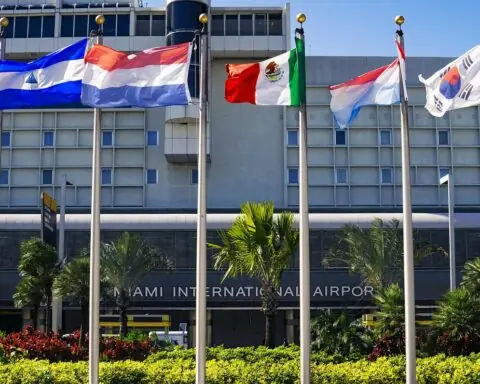Florida has started construction on a toll road that will allow some electric vehicles to power up while driving. The project undertaken by the Central Florida Expressway Authority, known also as CFX, is one of the first in the nation to incorporate a system that utilizes electromagnetic induction that charges EVs while travelling at highway speeds.
The $546 million Lake/Orange Expressway, also known as State Road 516, is a 4.4 mile expressway that will link Lake and Orange counties west of Orlando. The wireless charging system will be installed on a three-quarter mile stretch of one of the vehicle lanes. The expressway is expected to open in 2027.
“The Lake/Orange Expressway will be an example of what is possible when we think about transportation into the future,” CFX Executive Director Michelle Maikisch said in a press release when the project broke ground on April 4.
With major initiatives underway to electrify transportation in the United States, wireless electric vehicle charging has potential to fill an important void. To reduce climate-warming carbon dioxide emissions from vehicle travel, the federal government approved major tax incentives through the 2022 Inflation Reduction Act that make EVs more affordable for consumers. But before choosing to buy an EV, drivers want assurance that they will not get stranded with a dead battery.
Surveys have shown that “range anxiety” makes how far a vehicle can travel off one charge the leading factor that potential EV buyers consider. The Federal Highway Administration is deploying $5 billion for expanding EV charging capabilities across the country, with the latest $150 million awarded to 24 state-level projects in January.
EV charging moving forward nationwide
Several projects across the country are testing technology that will charge EVs wirelessly as they are driving, which has been called dynamic charging. In 2023, the first dynamic charging capability on a public road was installed near downtown Detroit using technology developed by the Israel-based company Electreon in partnership with the U.S. Department of Transportation.
In Florida, the charging technology is being developed by ENRX, a company headquartered in Norway that formed as a combination of a wireless charging company IPT technology and leading induction heating company EFD Induction. ENRX will build the induction charging capability into the tollway with a $13.6 million contract from the Central Florida Expressway Authority.
“Induction charging sounds a little bit like magic, right? You just send energy through space, but this principle is used every day for at least the last 100 years,” Magnus Vold, the chief commercial officer for ENRX, said in an interview with Government Market News.
Electromagnetic induction charging requires a power source, a transmitting coil capable of generating a magnetic field and a receiving coil that enters the magnetic field. When in range, an alternating current allows electricity to flow from the power source, through the transmitter to the receiver. When flowing to the receiver, the AC current is converted to a direct current that charges a battery.
The basic science behind electromagnetic induction was discovered in 1831. Induction is already an essential part of how electric motors and power transformers on the electric grid work. With the company’s history developing induction heating, Vold said induction charging for EV batteries is similar.
While the science is nothing new, a major challenge to developing dynamic charging based around electromagnetic induction is that electric vehicles need to be built with receiving coil that picks up the magnetic current, and EV manufacturers have yet to widely adopt the feature.
“It’s sort of the chicken and egg. Will you have all cars equipped with this before they can drive anywhere with it? Or will you have somebody investing a lot of money into a road that nobody can drive on?,” Vold said. “That’s the tricky part right now from a business development point of view.”
Some car companies — including Hyundai, BMW and Audi — have released car models that have wireless charging capability built in. Tesla is rumored to be developing wireless charging capability on its Cybertruck, but the company has not made any official announcements or responded to requests for comment from Government Market News.
Standardization needed
Over the coming few years, Vold said he expects many vehicles to be retrofitted to be capable of utilizing dynamic charging roadways. But for the product to become more “commercially viable,” Vold said greater “standardization” is needed to give EV buyers the choice to buy any vehicle knowing that they will be able to charge it while driving on roads like the Lake/Orange Expressway.
To create that standard, Vold said talks are underway between ENRX, its dynamic charging competitors and some car manufacturers. “All of us are working together to define a common standard because that will be the first step,” Vold said.
Part of the funding from the Florida project will also flow to a project for testing dynamic charging technology in collaboration with the ASPIRE Engineering Research Center in Utah. Vold said the company is working on several more projects in the United States that will be announced later this year.
With the growth of autonomous vehicles, Vold sees another market trend that could benefit wireless induction charging. States are also looking to test roadways specifically for autonomous vehicles. For example, Texas announced in 2023 that it will create a 21-mile corridor for autonomous freight vehicle travel on State Highway 130.
“If you look at autonomous driving,” Vold said, then “you may not have anybody to plug a cable.”













